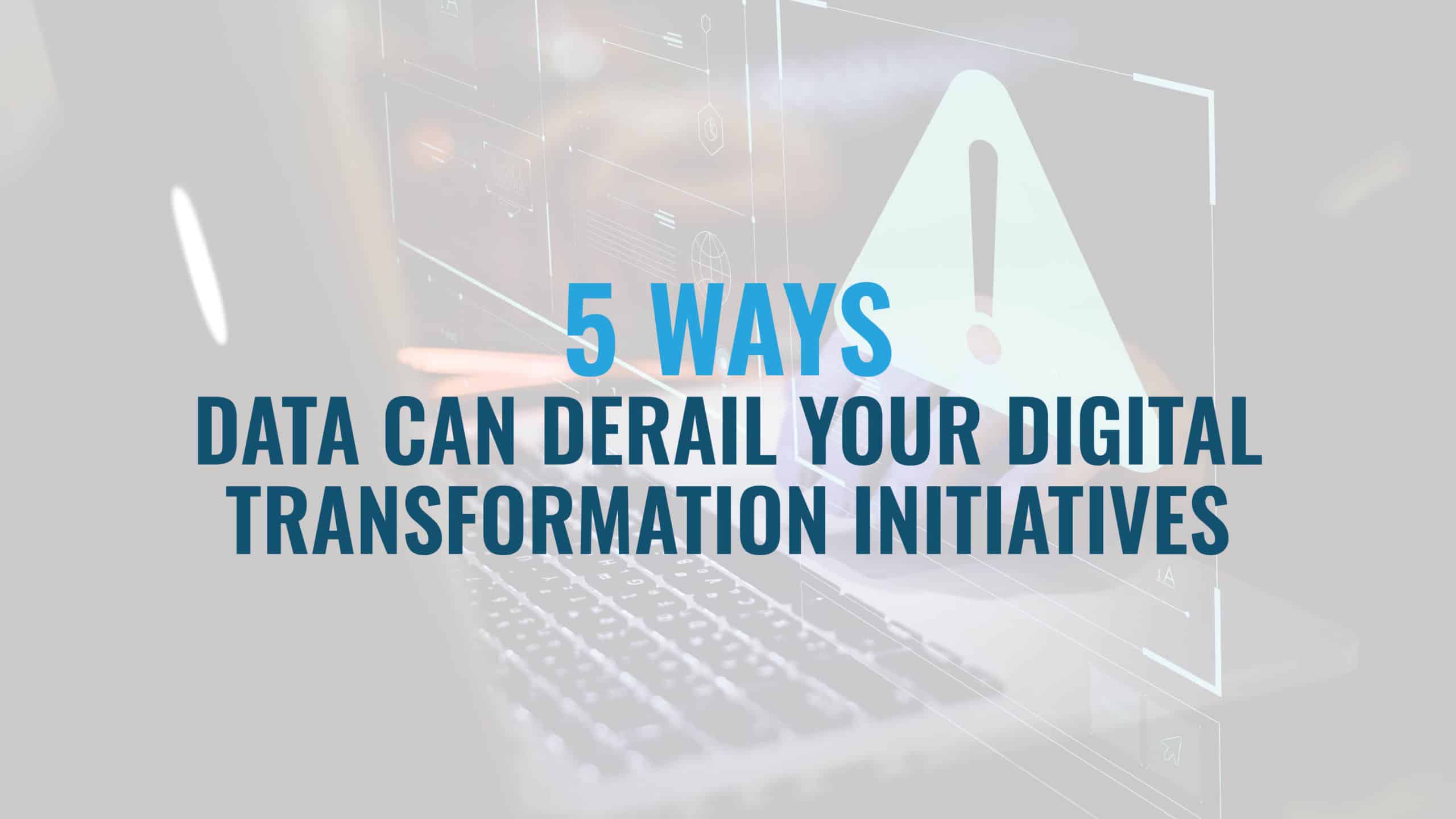Transforming an organization to a truly digital powerhouse takes planning and teamwork, and there are plenty of things that can go wrong along the way. But because data is the underpinning of any digital transformation, neglecting proper data management can send a project into a tailspin from which you might not recover. Check these five issues and formalize your strategies as you pursue your DT efforts.
The first step is to assure you are able to use your company’s data by making sure the data itself is viable. That means managing it from acquisition to consumption. If data management isn’t already part of your IT operations it’s the best place to start. Comprehensive data management means understanding and controlling data as it moves through your systems even when it’s in relatively static storage. Master data management systems can bring clarity to the processes and help to find and resolve problems.
- Data quality – The old adage, ‘garbage in = garbage out’ still says it all. But good data stewardship that monitors the data coming from its sources through its use and analysis can spot issues that cause problems with your data and point to ways to increase its quality. Issues include accuracy, correctness, completeness, formatting, and other anomalies that can creep in at different points during processing. The first step is to identify poor quality data so that steps can be taken to improve the issues and make the data assets usable. A good master data management plan can uncover and even help resolve these factors that can contribute to unusable data aren’t always obvious. Look for:
Disparate data often shows up in stand-alone systems that weren’t initially intended to be integrated into other functions. Look at legacy systems and departmental functions that have grown in use over time.
Duplication of records can cause confusion when more than one record refer to the same entity. Customer records that have the same name with different addresses are prime examples that can create erroneous billing or promotional expenses, not to mention occupying additional storage space.
Lack of governance can stymie attempts to use an enterprise’s data when multiple systems are implemented with no thought for the underlying data and its eventual use.
Data silos are another example of data that exists in separate storage facilities or in formats that have not been designed to connect with other data the company may have.
But there are other issues
- Not facilitating a data-first mindset can derail your digital transformation initiative before it even gets started. If your organization isn’t already considering data its most important asset next to its main products, start by reimagining your strategy and put data at the forefront of your business processes.
- Not having a formalized data strategy is a sure way to make life more difficult when implementing a digital transformation effort. It’s should be one of the first tasks undertaken once your organization has adopted a data-first mindset and it paves the way for easier and more productive use of the data being accumulated.
- Not cleansing the data you’re collecting can tank a transformation effort by including too many duplicate, false, incorrect, or incomplete records. You should be cleansing your data even before you collect it by assuring your applications validate data before as it’s acquired. From that point on it still needs to be reviewed and cleaned so it conforms with company standards. Even after you’re assured your data is clean and compliant it needs to be reviewed periodically to account for updates and changes that could happen as other processes are performed.
- Not having the right technology in place to manage the data is one of those issues that can be solved relatively easily and can bring a wildly unmanaged aggregation of data to order… and keep it there. Implement data management tools to bring order and consistency across multiple forms and sources of data for an entire enterprise dataset. In addition to helping establish order in a previously unmanaged data collection, the right tools can stand guard and monitor data as it’s collected, cleaning and assuring it complies with the company’s defined data strategy. It can be the management tool that makes your digital transformation successful.
There are plenty of ways to derail a promising digital transformation but good planning and knowing in advance what might get in the way as well as how to assure your data is ready to be leveraged is key to staying on track and delivering.

Forrest Brown
Forrest Brown is the Content Marketing Manager at Profisee and has been writing about B2B tech for eight years, spanning software categories like project management, enterprise resource planning (ERP) and now master data management (MDM). When he's not at work, Forrest enjoys playing music, writing and exploring the Atlanta food scene.











